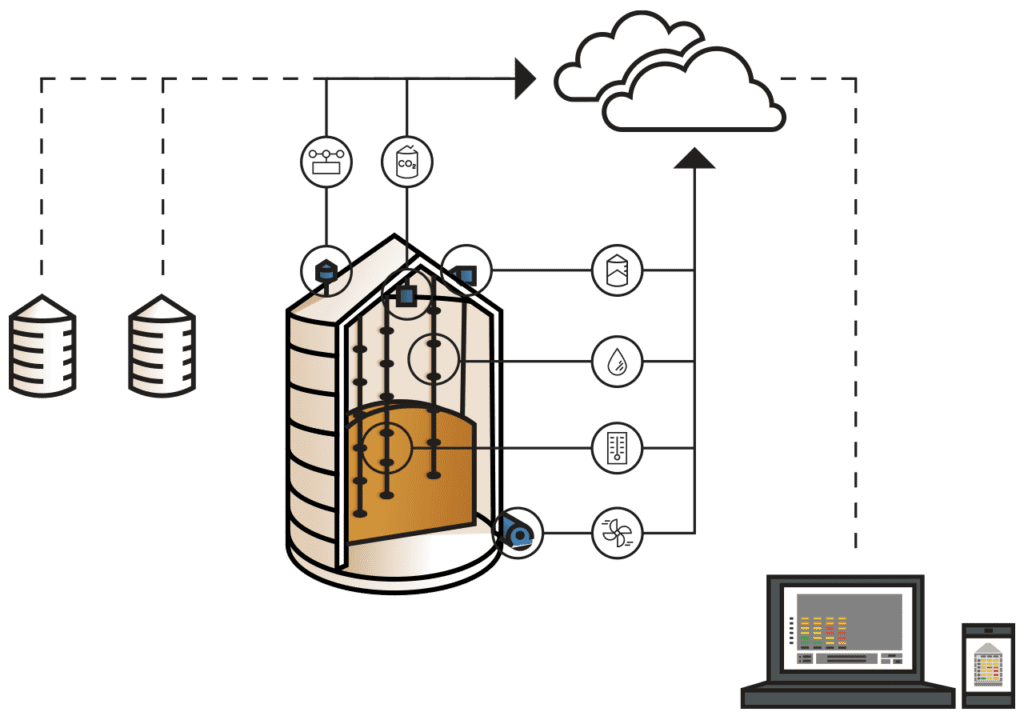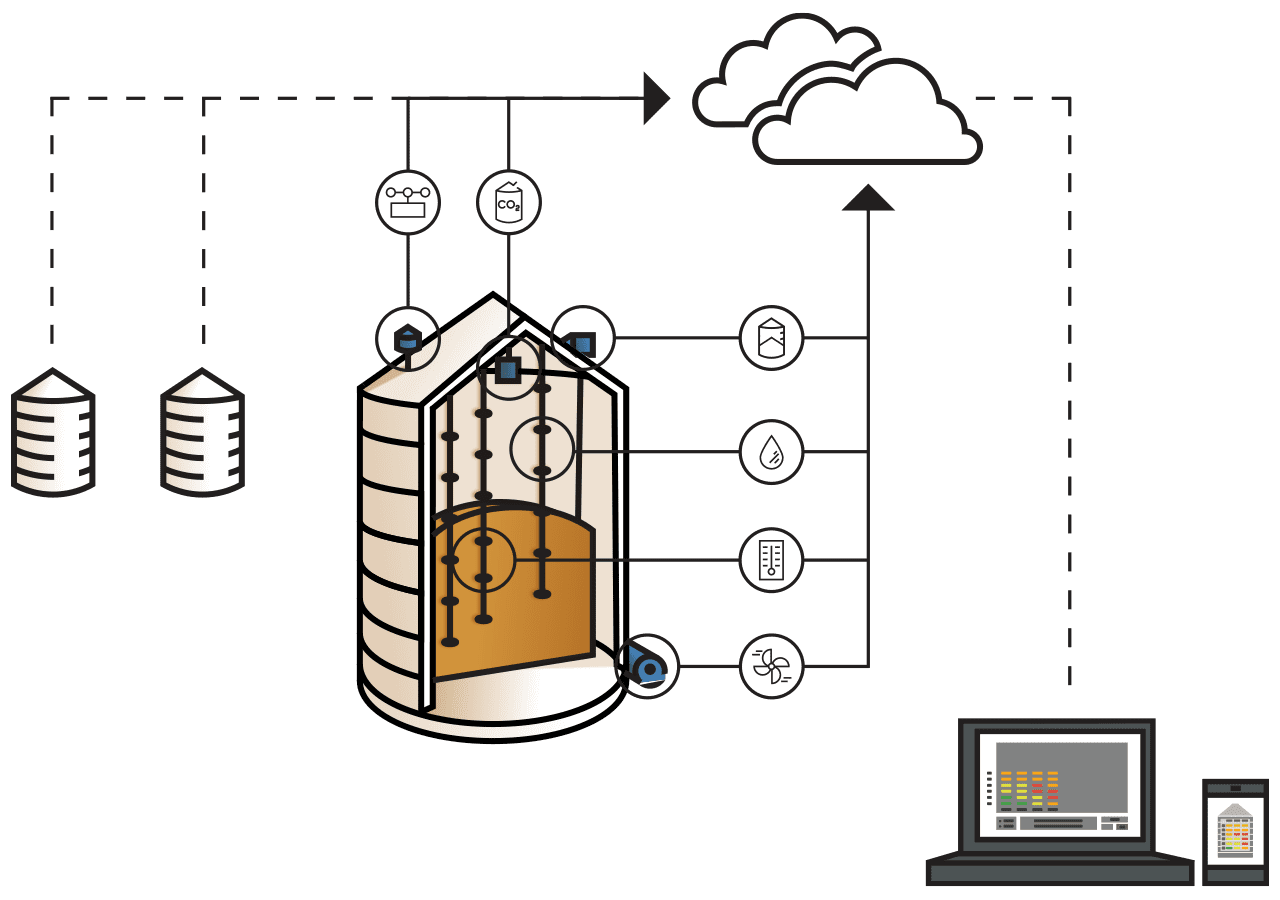You’ve finished harvest and your grain is stored in the bins. For those lucky ones who’ve installed grain temperature monitoring cables in your bins, you can monitor grain temperature at will. You can check anytime to see if it’s healthy, or if it’s sick.
If you don’t have grain temperature monitoring cables in your bins, well, there’s always next year. Hopefully, this year you’ll get by just fine.
Portable Grain Temperature Monitoring
When we’ve got cables in the bin, we have several options. We’ve talked about reading them on a portable reader where we actually go out to the bin site. We plug in the monitor, and write down the temperature, come back in and compare the temperatures to the week prior. And we’ve talked about portable devices that also store that information.

Bin Temp model 612 or 1821 works on a 9-volt battery. Check temperatures at the bin site and write down the temperatures.

BTM (Bin Temp Memory) allows you to save up to 10 readings and download them onto a laptop later.

SafeScan Digital Scanner lets you read temperatures in the field or at home, plus it analyzes, graphs, reports, and archives data.
Some of you have cables in your bins and you’ve been using a portable reader. But now you decide you’d like to do something different. You’d like to read those temperatures on your phone or in your house, so you can monitor your grain more closely and conveniently.
Using GrainTrac to Monitor Grain Temperature
We moved on to GrainTrac, a wireless system to monitor grain temperature. With GrainTrac, we looked at how we actually hook up those cables. So now, let’s talk about what you’re going to do afterwards. How do you read those temperatures?
First, you should know that the beauty of GrainTrac is that you can upgrade from your portable system. And you can do it quite easily. Once you’ve taken your GrainTrac unit out of the box, you take your old monitor reading box off the side of the bin. You put the GrainTrac unit on the bin in its place and start it up. Now, all your bin data is in the palm of your hand on your smartphone.
To illustrate that for you, TSGC General Manager, Dan Winkowitsch uses his cell phone with a WagNet app on it. He’s going to read those bin cables on his phone to show you how easy it is.

Monitor grain temperature from your cell phone.
Using the WagNet App on Your Cell Phone
“I find the WagNet app on my phone and open it up. Now, I’ve logged into a customer’s grain bin. We can see his temperatures from top to bottom. This is a 105 bin, so you can see every sensor on the first four cables. As you scroll to the left, you’ll see the next four cables, and so on until you’ve viewed all 24 cables. All the grain that’s in his bin has been checked.”

Scan left to read up to 24 cables in a single bin.
If you were this customer, and you had well in excess of 100,000 bushels of corn, you would be able to check these temperature cables several times a day. You would know that your grain was completely healthy.
You also would’ve been able to watch as that drying or cooling front (as grain was mostly dry during this particular year) move from the bottom of the bin at sensor #1 to the top of the bin, sensor #12. When you see that all the grain is cooled down, of course you turn your fans off and you leave the grain alone. It all takes care of itself.
However, whenever during the storage year you decide to check the temperature on your phone or home computer and you see a red spot, or the temperature has climbed in relation to the temperature outside, you’re getting what’s called a hot spot.

Hot spots appear red on your grain temperature reading.
You’ll know you have to turn on your fans and cool that grain again. You turn on your fans, and the air moves upward through that grain. You watch it on your screen. Once it’s cooled down, you turn your fans off. You save electricity, you save money, you have no spoilage in your grain, and you are a very happy grain manager.
If you’re ready to monitor your stored grain from the comfort of your home, ask us about GrainTrac here, live chat with us here, or call us at 1 800 438 8367.
Follow us on Facebook where we discuss a variety of farming topics, including grain temperature monitoring and Smart Farming.



